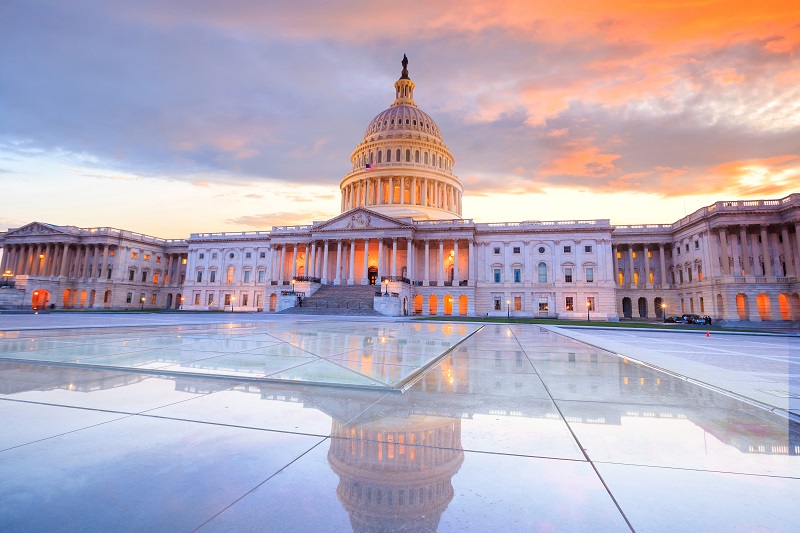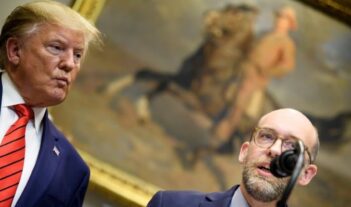
The history of regulatory policy in the United States is rich, but its future remains unclear.
Ever since Congress created the first federal regulatory body more than 130 years ago, people have debated the proper role for what has been called the “fourth branch” of government. This essay provides a brief history of regulation and deregulation, reviewing the key milestones that have shaped regulatory practices in the United States from the mid-1900s to the presidency of Donald J. Trump.
Milestone 1: The Administrative Procedure Act. The Interstate Commerce Commission was created in 1887 to constrain railroad rates. In the decades that followed, Congress established a variety of agencies to regulate interstate trade, water and power, communications, commodity exchanges, and other areas of activity. In the 1930s, President Franklin D. Roosevelt’s New Deal expanded the jurisdiction of these agencies and added new ones, but their sweeping authorities began to raise concerns that Congress’s apparent delegation of legislative powers to federal agencies might be unconstitutional.
Years of debate on the question of unconstitutional delegation led to the passage in 1946 of what was arguably the first regulatory reform bill—the Administrative Procedure Act (APA). The APA reflected a “fierce compromise,” balancing the competing goals of bureaucratic expertise and legislative accountability. Its requirements—that regulations be grounded in statutory law and an administrative record that includes public notice-and-comment—continue to guide rulemaking today.
Milestone 2: Economic Deregulation. The 1970s and 1980s brought a wave of deregulation. The “economic regulation” prevalent at that time relied on economic controls, such as price ceilings or floors, quantity restrictions, and service parameters.
Although one justification for economic regulation was to protect consumers from the exercise of producers’ market power, observers noted that regulatory agencies, such as the Interstate Commerce Commission, the Civil Aeronautics Board, and the Federal Communications Commission, seemed to get “captured” by the industries they regulated.
By the early 1970s, legal and economic scholarship generally recognized that economic regulation of prices and entry tended to keep prices higher than necessary, benefiting regulated industries at the expense of consumers.
This awareness motivated bipartisan deregulatory efforts across government that eventually led to the abolition of some agencies, including the Interstate Commerce Commission and Civil Aeronautics Board, and to the removal of unnecessary regulation in several industries. The deregulation of transportation and telecommunications that occurred in the 1970s and 1980s succeeded in increasing competition, which lowered consumer prices and increased choices, and provided tens of billions of dollars per year in consumer benefits.
Milestone 3: Benefit-Cost Analysis. While economic forms of regulation were declining in the 1970s, a new type of “social regulation” began to emerge, aimed at protecting health, safety, and the environment. Concerns over these rules’ reporting and compliance burdens led to the next wave of regulatory reform, focused not on deregulation, but on ensuring that regulatory benefits outweighed costs.
In 1978, President Jimmy Carter issued Executive Order 12,044, which established procedures for analyzing the impact of new regulations and minimizing their burdens. In 1980, Congress passed and President Carter signed the Paperwork Reduction Act, which created the Office of Information and Regulatory Affairs (OIRA) in the Office of Management and Budget to review and approve all new reporting requirements. Benefit-cost balancing has since become standard practice in most regulatory agencies, and it is increasingly expected by reviewing courts.
Milestone 4: White House Review. When President Ronald Reagan took office in 1981, he issued Executive Order 12,291, giving the newly created OIRA a gatekeeper role in reviewing draft regulations—as well as paperwork—to ensure that their benefits exceeded their costs. Although this order was initially controversial, each subsequent president has continued and expanded OIRA’s central regulatory oversight role, as well as the economic principles embodied in the orders issued by Presidents Reagan and Carter.
In 1993, President William Clinton replaced Executive Order 12,291 with Executive Order 12,866, which remains in effect today, despite the very different regulatory rhetoric of Presidents Bush, Obama, and Trump, who succeeded him. Executive Order 12,866 retained OIRA’s review of significant new regulations. It also reinforced the philosophy that regulations should be based on an analysis of the benefits and costs of all available alternatives, and that agencies should select regulatory approaches that maximize net benefits to society unless otherwise constrained by law.
Will Regulatory Budgeting be Milestone 5? Is the American public witnessing the next wave of regulatory reform? President Trump has made deregulation a high priority. Although he has retained Executive Order 12,866, he has overlaid its requirements to maximize net regulatory benefits with an incremental regulatory budget. Executive Order 13,771, which President Trump issued in 2017, requires agencies to remove two regulations for every new one issued and to offset the costs of new regulations by removing or modifying existing rules. The emphasis on reducing regulatory costs reflects a dramatic departure from the focus on net benefits that has prevailed for social regulations.
To date, Executive Order 13,771 has led to a sharp reduction in the issuance of new regulations, as well as to the modification and removal of some existing regulations. Nevertheless, President Trump’s initiatives have not come close to achieving his promise of cutting regulations by 75 percent, and that is due to the regulatory process that previous reforms have instituted.
To remove or revise an existing regulation, agencies must follow the notice-and-comment procedures of the APA to build a record they can defend in court. They must also demonstrate that the benefits of proposed deregulatory actions outweigh the costs.
Whether President Trump’s policies become a permanent fixture of the U.S. regulatory landscape remains to be seen. The next President could rescind his executive orders with the stroke of a pen. Looking back, however, it is striking to see the degree of bipartisan consensus on the need to develop practical tools for managing the administrative state. As President Carter’s Economic Report of the President concluded in 1980:
The Nation must recognize that regulation to meet social goals competes for scarce resources with other national objectives. Priorities must be set to make certain that the first problems addressed are those in which regulations are likely to bring the greatest social benefits. Admittedly, this is an ideal that can never be perfectly realized, but tools like the regulatory budget may have to be developed if it is to be approached.
Like earlier milestones in regulatory reform, the nascent regulatory budget has been initially controversial, and it is too soon to tell whether it will achieve comparable durability.
This essay is part of a five-part series, entitled Deregulation Then and Now.




